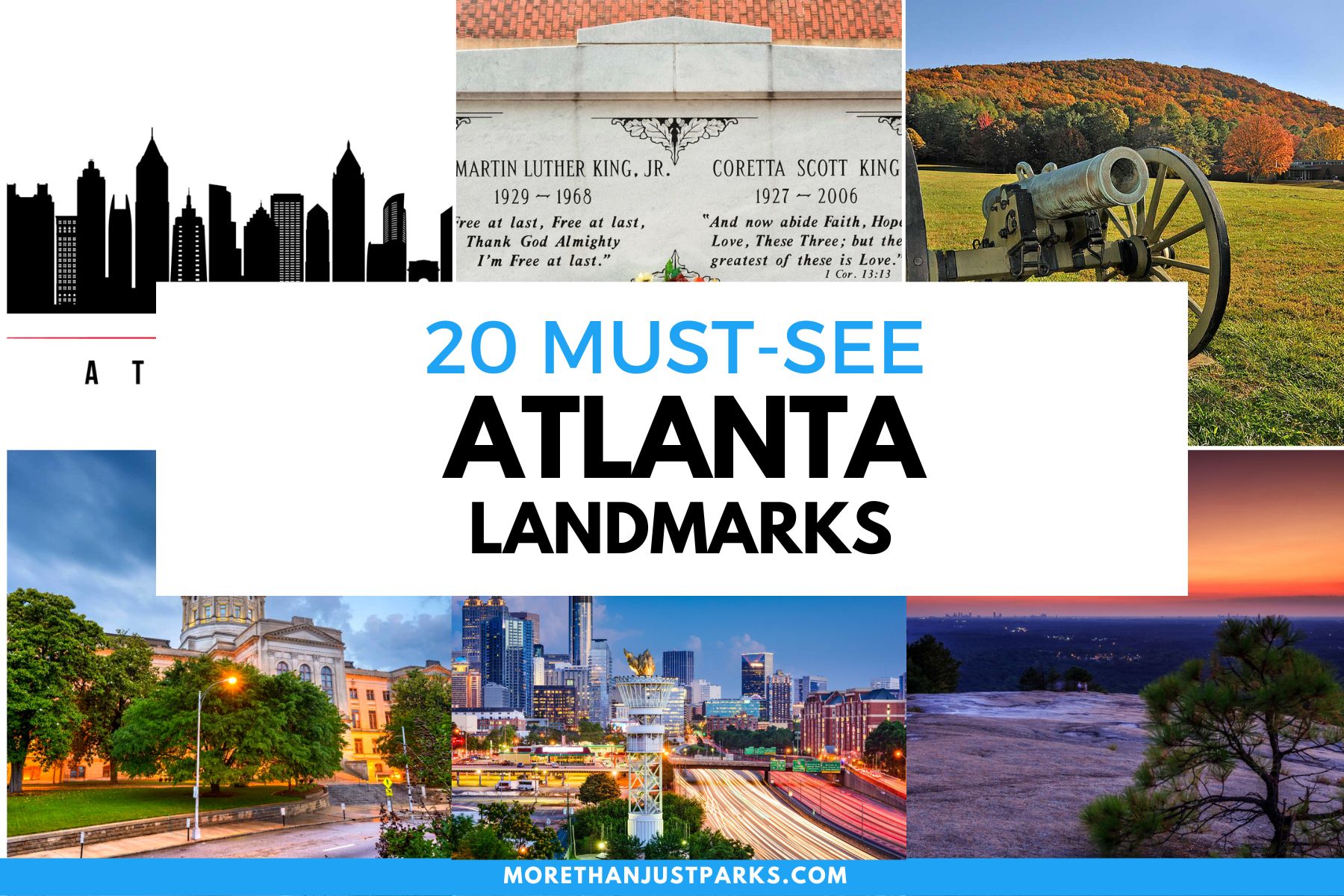
Article Summary: Atlanta Landmarks
Atlanta Landmarks. More Than Just Parks has 20 incredible must-see sites for you to visit.
There’s so much more to this exciting place than the Atlanta Braves. In this article, we’ll familiarize you with the incredible landmarks located in the Big Peach.
We’ve got incredible places, iconic memorials, fascinating museums, epic monuments and so much more.
We’re going to give you our list of the Top 20 Landmarks In Atlanta.
So, What Is A Landmark?
Well, it’s a place of “a special character or special historical or aesthetic interest or value as part of the development, heritage, or cultural characteristics of a city, state, or nation.”
Why visit these places? Because landmarks connect us to the past. Through visiting these wonderful places where history occurred we find our roots. It allows us to feel like we are a part of something much bigger than ourselves.
And, speaking of history, did I mention that I taught the subject? I spent a lifetime teaching about the history behind many of these amazing sites. Then I got to see them firsthand. And now I’m sharing the fascinating stories of these places with you. It doesn’t get any better than that!
So, without further ado, let’s dive in.
Atlanta Landmarks
Some Fascinating Facts About Atlanta
Here are some fascinating facts about the city of Atlanta:
- Atlanta is the capital city of Georgia and the ninth-largest metropolitan area in the United States.
- The city was originally founded in 1837 as Terminus, a transportation hub where several major railroads met.
- Atlanta played an important role in the Civil Rights Movement, and it was the birthplace of Martin Luther King Jr.
- The city is home to several major universities, including Georgia Tech, Emory University, and Georgia State University.
- Atlanta is known for its thriving arts and culture scene, with numerous museums, galleries, and theaters.
- The city is home to several major sports teams, including the Atlanta Braves, Atlanta Falcons, and Atlanta Hawks.
- Atlanta is a major business hub, with many major companies headquartered in the city, including Coca-Cola, Delta Air Lines, and Home Depot.
- The city is home to the world’s busiest airport, Hartsfield-Jackson Atlanta International Airport.
- Atlanta has a diverse population, with large African American and immigrant communities.
- The city is known for its beautiful parks and outdoor spaces, including Piedmont Park, Centennial Olympic Park, and the Atlanta Botanical Garden.
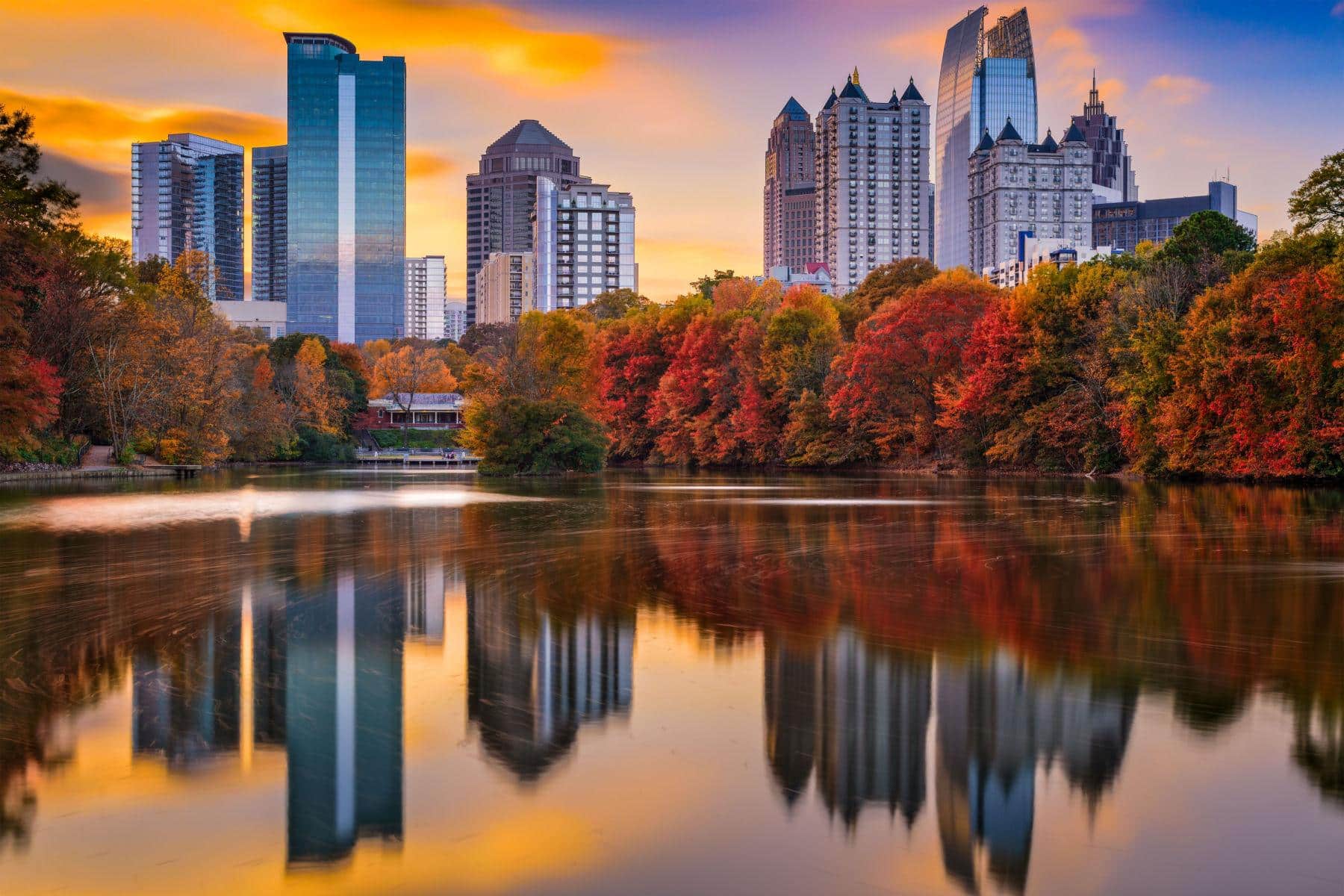
We’re Excited To Share Our List Of The Top 20 Atlanta Landmarks With YOU
Atlanta is known for its high-traffic airport, thriving hip-hop scene, and prominent role in Civil Rights history. The city is home to well-known brands like Coca-Cola, Delta, and CNN.
It’s also home to some amazing landmarks. We’re going to share our list of the Top 20 Atlanta Landmarks with you and we’re kicking off our list at #20 with The Fabulous Fox Theater.

Top 20 Atlanta Landmarks
20. The Fox Theater
The Fox Theater is a historic theater located in the Midtown neighborhood of Atlanta, Georgia.
It was built in 1928 as a part of the Fox Theater chain, which was owned by William Fox. The theater was designed by architect Oliver Vinour, and it was built in the style of an Indian courtyard, complete with ornate decorations, intricate carvings, and a soaring ceiling that resembles a night sky.
In its early years, the Fox Theater was a popular destination for moviegoers, with its lavish décor and state-of-the-art sound system. However, as the popularity of movie theaters declined in the mid-20th century, the Fox Theater fell into disrepair and was eventually slated for demolition.
In 1974, a group of concerned citizens formed the Atlanta Landmarks, Inc. and launched a campaign to save the Fox Theater. After several years of fundraising and restoration work, the Fox Theater was reopened in 1976 as a performing arts venue. Since then, it has hosted a wide range of events, including Broadway shows, concerts, and comedy acts.
Today, the Fox Theater is considered one of the most iconic buildings in Atlanta and is listed on the National Register of Historic Places. It has undergone several renovations over the years to restore it to its original grandeur, and it continues to be a popular destination for visitors and residents alike.

Fox Theater in Atlanta | Courtesy of Wikimedia Commons
19. Fernbank Museum of Natural History
Next on our list of the Best Atlanta Landmarks is a museum that focuses on the natural history of the Southeastern United States. The museum was established in 1992 and is located in a 65-acre forested area in the city.
At #19 on our list of the Best Atlanta Landmarks is the Fernbank Museum of Natural History.
The museum’s history can be traced back to 1938 when Emily Harrison, a science teacher in Atlanta, opened a natural history museum in her home.
The museum grew in popularity over the years, and in 1967 it was relocated to a larger facility in downtown Atlanta. In the 1980s, plans were made to move the museum to its current location in DeKalb County, and the new facility was opened in 1992.
The museum’s centerpiece is the Great Hall, a 3-story atrium that houses the world’s largest dinosaurs. The museum also features exhibits on Georgia’s natural history, including displays on the state’s geology, ecology, and wildlife.
There’s Also A Science Center
Additionally, the museum has a number of interactive exhibits, including a nature exchange program and a fossil dig site where visitors can search for real fossils.
In addition to its exhibits, the Fernbank Museum of Natural History is also home to the Fernbank Science Center, a separate facility that focuses on science education and research.
The science center offers a variety of programs and resources for students and educators, including planetarium shows, field trips, and professional development opportunities.

Fernbank Museum of Natural History | Courtesy of Wikimedia Commons
18. Swan House
Our next Atlanta landmark is a proud example of the Second Renaissance Revival style and is listed on the National Register of Historic Places. At #18 on our list of the Best Atlanta Landmarks is the Swan House.
The Swan House was built in 1928 for Edward and Emily Inman, a wealthy couple who were prominent members of Atlanta society. The mansion is known for its distinctive architecture, which features a combination of Italianate and Classical Revival styles.
The exterior of the Swan House is made of white Georgia marble, and it is surrounded by beautifully landscaped gardens. The mansion has four floors, including a basement, and it covers over 28,000 square feet. Inside, the Swan House features 42 rooms, including 12 bedrooms, 18 bathrooms, and numerous sitting rooms, libraries, and dining areas.
The interior of the Swan House is decorated with luxurious furnishings and finishes, including marble floors, intricate woodwork, and ornate plaster ceilings. Some of the notable features of the mansion include a grand staircase, a solarium with a domed ceiling, and a ballroom that can accommodate up to 300 guests.
Today, the Swan House is open to the public as part of the Atlanta History Center. Visitors can take guided tours of the mansion and learn about the history of Atlanta and the Inman family.
The Swan House is also a popular venue for weddings, receptions, and other special events.
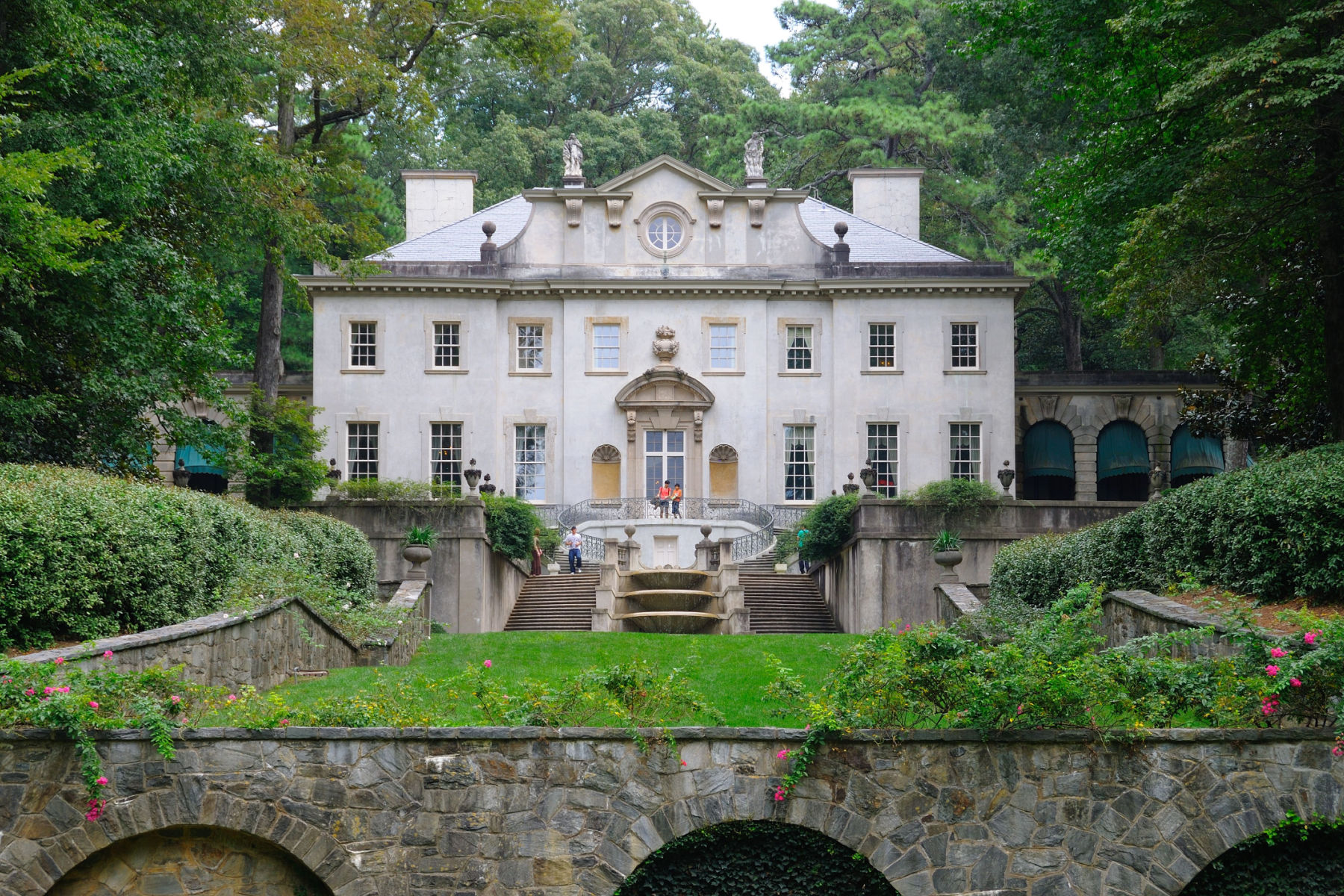
17. Atlanta History Center
Our next Atlanta landmark is a member of the International Coalition of Sites of Conscience, which is the only global network of historic sites, museums and memory initiatives that connects past struggles to today’s movements for human rights.
At #17 on our list of the Best Atlanta Landmarks is the Atlanta History Center.
The Atlanta History Center was founded in 1926 and is dedicated to preserving and sharing the history and culture of Atlanta and the surrounding region.
The Atlanta History Center covers 33 acres and includes several historic buildings and gardens. The center also includes the Smith Family Farm, which is a living history museum that recreates life on a 19th-century farm in Georgia.
In addition to these historic buildings, the Atlanta History Center also includes several exhibitions that explore various aspects of Atlanta’s history. These exhibitions cover topics such as the Civil War and Reconstruction, the Civil Rights Movement, and the history of Southern food and culture.
The Atlanta History Center also has a research center that houses a large collection of books, documents, photographs, and other materials related to the history of Atlanta and the South.
The research center is open to the public, and visitors can use the materials to conduct their own research or learn more about the history of the region.
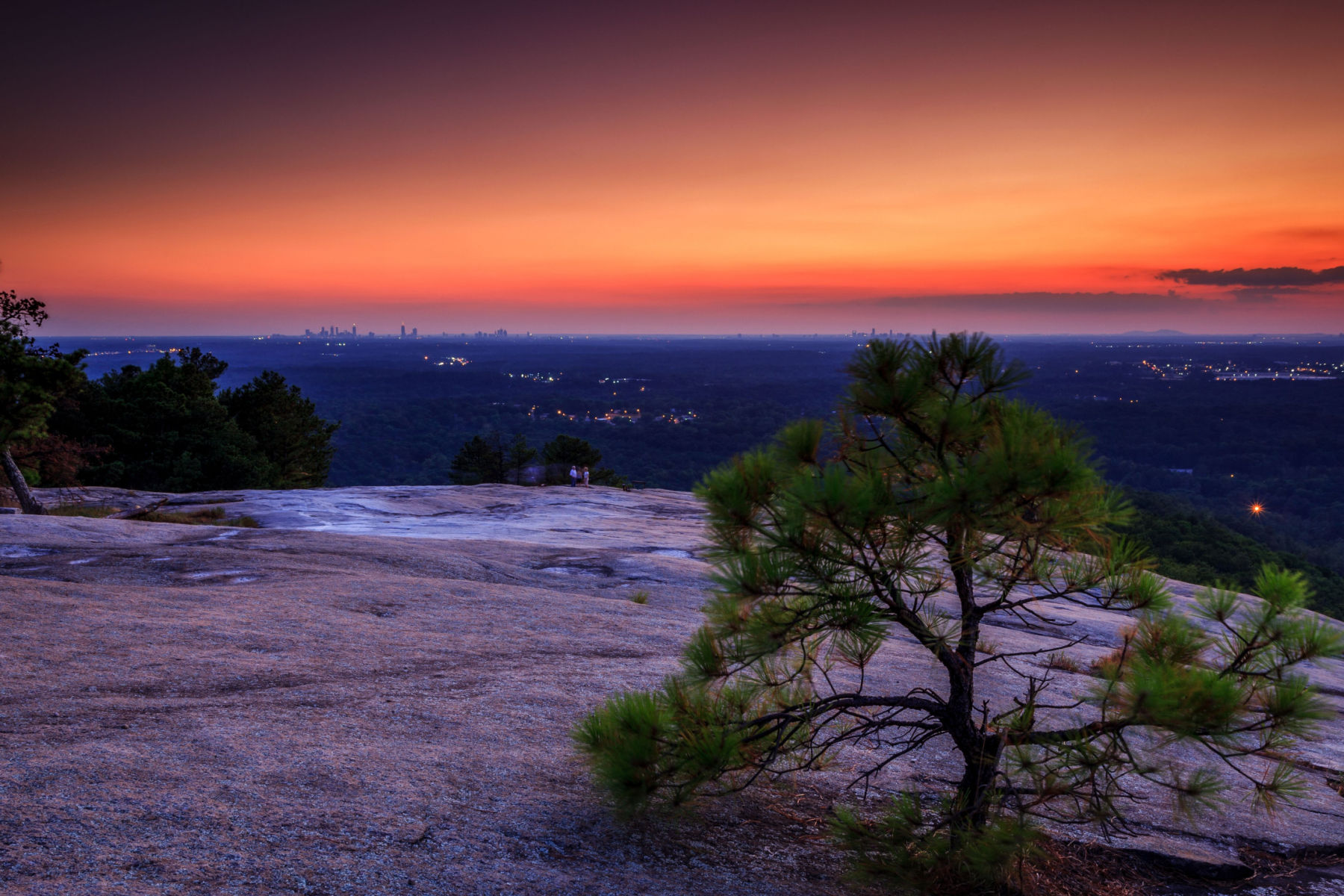
16. CNN Center
Our next Atlanta landmark is the international headquarters of the Cable News Network. At #16 on our list of the Best Atlanta Landmarks is the iconic CNN Center.
The CNN Center was built in 1976 to serve as the headquarters of the Cable News Network (CNN), which was launched the same year.
The original building was designed by the architectural firm Skidmore, Owings & Merrill and was built to accommodate the rapidly growing cable news industry. It was one of the first buildings in the United States to be specifically designed for a 24-hour news operation.
Over the years, the CNN Center has undergone several renovations and expansions. In 1987, a new 30-story tower was added to the complex to house CNN’s studios and offices. In 1995, the complex was expanded again with the addition of a food court, shops, and a hotel.
The CNN Center has been the site of many important events in Atlanta’s history. It was the headquarters of CNN’s coverage of the 1996 Summer Olympics, which were held in Atlanta. It has also been the site of several major political events, including presidential debates and election night coverage.
Today, the CNN Center remains a major hub of news and media in the United States. It is also a popular tourist destination, with many visitors coming to see the famous CNN newsroom and take tours of the facility.
The complex is also home to several restaurants, shops, and other businesses, making it a bustling center of commerce and culture in downtown Atlanta.

CNN Center | Courtesy of Wikimedia Common
Top 15 Atlanta Landmarks
15. Center For Puppetry Arts
Our next Atlanta landmark is a place which has delighted children of all ages for many years. At #15 on our list of the Best Atlanta Landmarks is the Center For Puppetry Arts.
The Center for Puppetry Arts in Atlanta was founded in 1978 by Vincent Anthony, a puppeteer and teacher who had previously run a puppetry program at Mississippi State University. Anthony saw the need for a dedicated space for puppetry in the Southeastern United States, and chose Atlanta as the site for the new center.
The center’s first home was a renovated church in Midtown Atlanta, where it opened in 1978 with a production of “Rumpelstiltskin.”
Over the next several years, the center developed a reputation for high-quality puppetry productions and educational programs, and in 1984 it moved to a larger space in the city’s Inman Park neighborhood.
The Center Has Undergone Expansions & Renovations
In the 1990s, the center expanded again, adding a museum to its facilities and developing partnerships with other cultural organizations in Atlanta. It also began to tour its productions around the country and internationally, bringing puppetry to audiences who might not otherwise have access to it.
In the early 2000s, the center underwent a major renovation and expansion, adding new performance spaces, classrooms, and workshops.
Today, the Center for Puppetry Arts is one of the largest nonprofit puppet theaters in the United States, with a diverse array of programming for all ages, including performances, workshops, and special events.
The center’s collection of puppets and related materials is also renowned, with more than 10,000 items from around the world.
The collection includes puppets from as far back as the 19th century, as well as contemporary works by puppet artists from around the world.

14. Atlanta Cyclorama & Civil War Museum
If you’re someone who loves history in general and the history of the American Civil War in particular then you’ll enjoy our next site. At #14 on our list of the Best Atlanta Landmarks is the Atlanta Cyclorama & Civil War Museum.
The Cyclorama is a cylindrical painting that depicts the Battle of Atlanta, which took place on July 22, 1864, during the American Civil War.
The painting was created in 1886 by a team of German artists and was originally displayed in a specially-built building in downtown Atlanta. In 1921, the painting was moved to a new location in Grant Park, where a museum was built to house it.
Over the years, the museum has undergone several renovations and expansions. In 1989, a new building was constructed to house the Cyclorama, which was then restored to its original condition.
The museum also features exhibits on the history of the Civil War and the Battle of Atlanta, including artifacts and interactive displays.
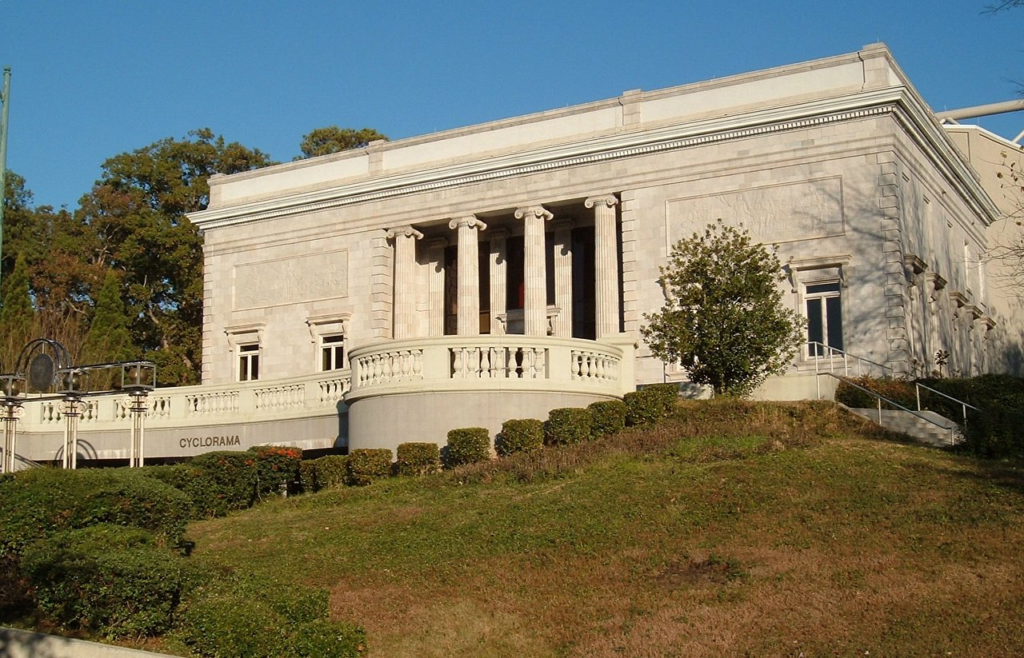
Atlanta Cyclorama | Courtesy of Wikimedia Commons
It Has Played An Important Role In Popular Culture
In addition to its historical significance, the Cyclorama has also played an important role in popular culture. It was featured in the 1939 film “Gone with the Wind,” and has been the subject of numerous books and articles.
Today, the Atlanta Cyclorama & Civil War Museum is a popular tourist attraction and a valuable educational resource for anyone interested in the history of the Civil War and the city of Atlanta.
The Cyclorama remains one of the largest and most impressive panoramic paintings in the world, and continues to draw visitors from all over the globe.
13. Georgia Capitol Museum
Built to symbolize Georgia’s reemergence after the Civil War, the Capitol continues to be one of the most impressive buildings in the state. Our next Atlanta landmark seeks to preserve and interpret the history of the Georgia Capitol building as well as the events that have taken place within its walls.
At #13 on our list of the Best Atlanta Landmarks is the Georgia Capitol Museum.
The Georgia Capitol Museum is located inside the Georgia State Capitol building in Atlanta. The museum is dedicated to preserving and promoting the history and culture of Georgia, with a particular focus on the state’s government and politics.
The museum features a variety of exhibits and artifacts, including historical documents, photographs, and memorabilia related to Georgia’s governors, legislators, and other political figures. Visitors can learn about the state’s role in major historical events, such as the Civil War and the civil rights movement, as well as its contributions to art, literature, and other cultural fields.
One of the museum’s main attractions is the Georgia Capitol building itself, which is a historic landmark and an example of neoclassical architecture. Visitors can take guided tours of the building, including the House and Senate chambers, and learn about the history and significance of its design and construction.
Other notable exhibits at the Georgia Capitol Museum include a replica of the Liberty Bell, a display of Georgia’s state symbols, and a tribute to the state’s military veterans. The museum also hosts special events and programs throughout the year, including lectures, concerts, and art exhibitions.
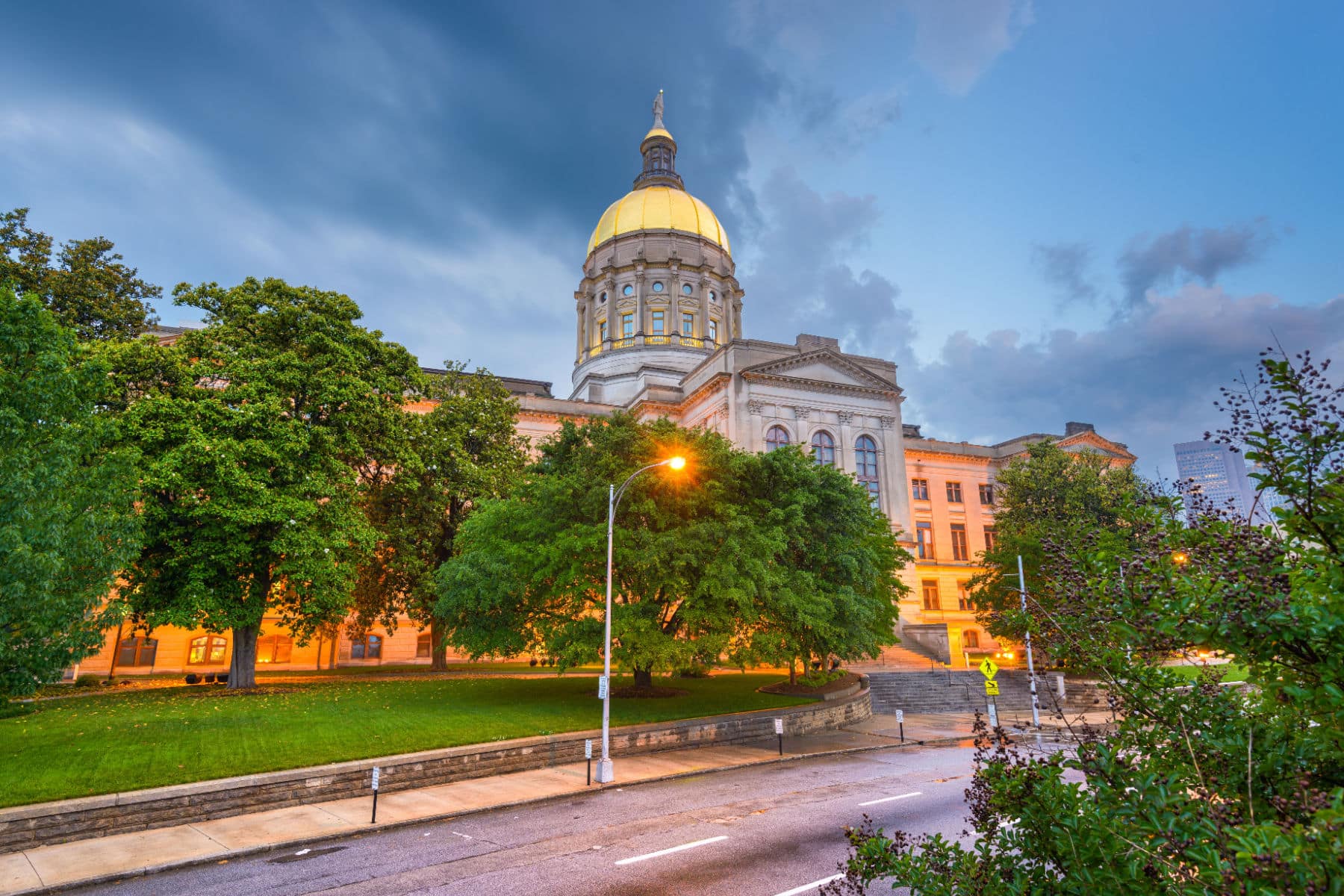
12. Margaret Mitchell Square
Our next Atlanta landmark honors the woman who wrote one of the most popular books of all time. The novel was published in 1936 and sold more than a million copies in the first six months, a phenomenal feat considering it was the Great Depression era.
At #12 on our list of the Best Atlanta Landmarks is Margaret Mitchell square.
Margaret Mitchell
Margaret Mitchell was an American author and journalist who is best known for writing the novel “Gone with the Wind.” The novel was published in 1936 and quickly became a cultural phenomenon, selling millions of copies and winning the Pulitzer Prize for Fiction in 1937.
Born in Atlanta, Georgia in 1900, Margaret Mitchell was raised in a family that valued education and literature. She attended Smith College in Massachusetts, where she studied literature and journalism.
After college, Mitchell returned to Atlanta and began working as a journalist for the Atlanta Journal. She also wrote fiction in her spare time, and in 1926 she began work on “Gone with the Wind.”
The novel tells the story of Scarlett O’Hara, a young woman living in Georgia during the Civil War and Reconstruction eras. It is a sweeping epic that explores themes of love, war, and race relations, and is widely regarded as one of the greatest works of American literature.
After the success of “Gone with the Wind,” Mitchell largely withdrew from public life and devoted herself to her family and friends. She died in 1949 after being struck by a car while crossing the street in Atlanta.

Clark Gable and Vivien Leigh, MGM Gone With The Wind | Courtesy of Wikimedia Commons
Margaret Mitchell Square
Margaret Mitchell Square is named in honor of Margaret Mitchell.
The square is a bustling and vibrant public space, surrounded by tall office buildings and busy streets. It is bordered by Peachtree Street to the east, Forsyth Street to the west, and Luckie Street to the north.
The centerpiece of the square is a bronze statue of Margaret Mitchell, which was unveiled in 1997. The statue shows Mitchell sitting on a bench with a book in her lap, and is a popular spot for visitors to take photos and relax.
In addition to the statue, Margaret Mitchell Square also features several benches and tables for seating, as well as a small fountain and landscaped gardens. The square is also home to several public art installations and sculptures.
Throughout the year, the square plays host to a variety of events and activities, including live music performances, art exhibits, and food festivals. It is a lively and dynamic gathering place for locals and tourists alike, and a fitting tribute to one of Atlanta’s most famous and beloved writers.
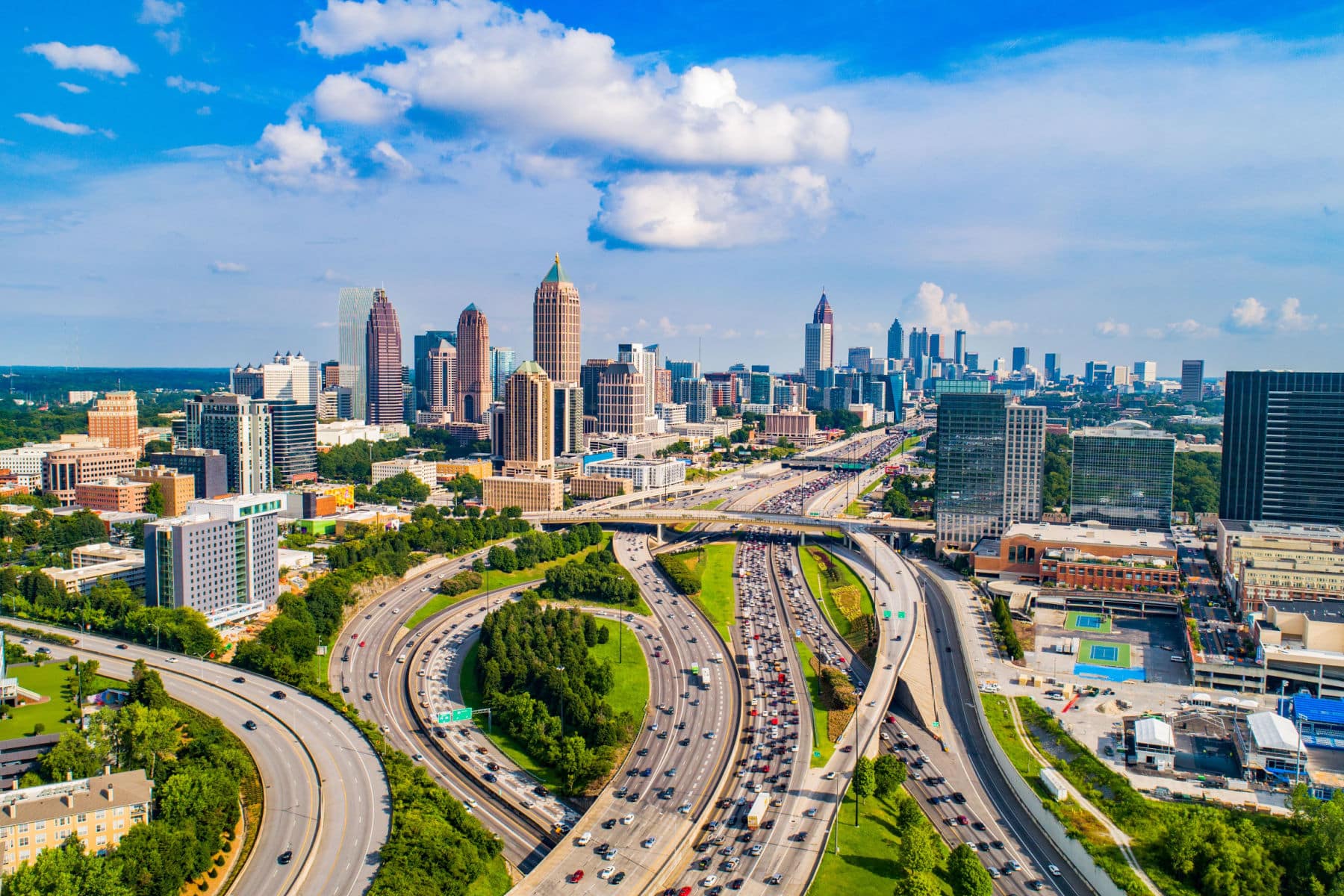
Atlanta, Georgia, Downtown Skyline Aerial | Shutterstock-Kevin Ruck
11. The Varsity
Our next site claims to be the “world’s largest drive-in” and is a must-do for locals, tourists, and visiting dignitaries. At #11 on our list of the Best Atlanta Landmarks is The Varsity.
The Varsity is a famous fast-food restaurant in Atlanta, Georgia, that has been serving up classic American cuisine since 1928. The restaurant is known for its iconic neon sign, its cheerful carhop service, and its famous menu items, including hamburgers, hot dogs, onion rings, and frosted orange drinks.
The Varsity was founded by Frank Gordy, who had the idea to open a drive-in restaurant that would serve hot dogs and cold drinks to students at Georgia Tech. The first Varsity location opened near the Georgia Tech campus and quickly became a popular gathering spot for students and locals alike.
Over the years, The Varsity expanded to include additional locations in the Atlanta area, as well as franchises in other cities. The restaurant has become an Atlanta institution, with generations of families and students returning to enjoy its classic fare and lively atmosphere.
In addition to its popularity with locals and tourists, The Varsity has also been featured in movies, TV shows, and songs, including the 1977 film “Smokey and the Bandit” and the 1994 song “Love Shack” by the B-52s.
Today, The Varsity remains a beloved institution in Atlanta and a symbol of the city’s unique history and culture. Its classic menu and lively atmosphere continue to attract visitors from all over the world who want to experience a true taste of Atlanta.

The Varsity, Atlanta | Courtesy of Wikimedia Commons
Top 10 Atlanta Landmarks
10. High Museum Of Art
We’re on to our list of the Top 10. Our next Atlanta landmark’s historical American Art collection includes over 1,200 paintings, sculptures, drawings, and prints made by artists working within the United States between 1780 and 1980.
At #10 on our list of the Best Atlanta Landmarks is the High Museum of Art.
The High Museum of Art was founded in 1905 as the Atlanta Art Association and has since grown to become one of the leading art institutions in the Southeastern United States.
The museum’s first home was a small space in the basement of the Carnegie Library in Atlanta, but it soon outgrew that space and moved to several different locations before settling in its current home in the mid-1980s.
The current building was designed by architect Richard Meier and is known for its distinctive white exterior and soaring galleries.
The Museum Has Amassed A Collection Of Over 18,000 Works
Over the years, the High Museum of Art has amassed a collection of more than 18,000 works of art, spanning a wide range of artistic styles and mediums. The collection includes works by many of the world’s most famous artists, including Claude Monet, Pablo Picasso, and Salvador Dali, as well as works by many up-and-coming artists and regional artists.
In addition to its impressive permanent collection, the High Museum of Art also hosts a variety of temporary exhibitions throughout the year, featuring works by both established and emerging artists. The museum also offers a wide range of educational programs and events, including lectures, workshops, and family programs.
Today, the High Museum of Art is widely regarded as one of the premier art museums in the United States and attracts visitors from around the world. Its collection and programs reflect the rich artistic heritage and vibrant cultural scene of Atlanta and the Southeastern United States.

High Museum of Art, Atlanta | Courtesy of Wikimedia Commons
9. Centennial Olympic Park
Our next Atlanta landmark not only serves as a legacy of the 1996 Olympic Games, but is the center of a thriving tourist district with neighbors that include the College Football Hall of Fame, the National Center for Civil & Human Rights, World of Coca-Cola, Georgia Aquarium, CNN Center and Children’s Museum of Atlanta.
At #9 on our list of the Best Atlanta Landmarks is Centennial Olympic Park.
Centennial Olympic Park was built for the 1996 Summer Olympics. The park is a lasting legacy of the Atlanta Olympics and is now a popular gathering spot for locals and tourists alike.
The idea for the park was first proposed in the early 1990s, as Atlanta was bidding to host the Olympics. The park was designed by a team of architects, landscape architects, and engineers, who worked to create a beautiful and functional space that could host a variety of Olympic events.
During the 1996 Summer Olympics, Centennial Olympic Park served as the central gathering place for athletes and visitors, as well as the site of several Olympic events, including concerts and fireworks displays.

1996 Centennial Olympic Games | Courtesy of Wikimedia Commons
The Park Became The Site Of A Tragic Bombing
However, the park also became the site of a tragic bombing on July 27, 1996, which killed two people and injured more than 100 others. The bombing caused significant damage to the park and its surrounding buildings, but the city of Atlanta worked quickly to repair the damage and reopen the park.
Today, Centennial Olympic Park has been fully restored and continues to serve as a symbol of Atlanta’s Olympic legacy. The park features a variety of attractions, including a large fountain, an amphitheater, a visitor center, and a variety of sculptures and artwork.
The park is also a popular gathering spot for events and concerts throughout the year, and it has become an important part of the downtown Atlanta landscape. The park’s legacy as a site of both tragedy and triumph serves as a reminder of the power of community and the resilience of the human spirit.

Centennial Olympic Park, Atlanta | Courtesy of Wikimedia Commons
8. Little Five Points
Our next Atlanta landmark is Atlanta’s hippie ‘hood. Everything about the area is Bohemian chic, and vintage stores line the streets alongside a natural foods market and indie radio station. At #8 on our list of the Best Atlanta Landmarks is Little Five Points.
Little Five Points has a rich history and cultural significance. The area was once a thriving commercial district and residential area, but by the 1960s and 1970s, it had fallen into disrepair and was known for crime and poverty.
In the 1970s, a group of artists and musicians moved into the area and began to revitalize it. They opened up galleries, music venues, and other businesses, creating a thriving arts community. The neighborhood became known for its eclectic mix of shops, bars, and restaurants, as well as its colorful street art and murals.
One of the most iconic landmarks in Little Five Points is the Vortex Bar and Grill, which opened in 1992 and has become a popular spot for locals and tourists alike. Other notable businesses in the area include Criminal Records, an independent record store, and The Porter Beer Bar, which has been named one of the best beer bars in the world.
Throughout the years, Little Five Points has also been a hub for political and social activism. The neighborhood played a key role in the Civil Rights Movement, and has been a gathering place for protests and demonstrations over the years.
Today, Little Five Points remains a vibrant and unique neighborhood that is beloved by locals and visitors alike. Its history and culture are celebrated through events like the Little Five Points Halloween Festival and Parade, which draws thousands of people to the area each year.

Little Five Points’ Halloween Parade | Courtesy of Wikimedia Commons
7. Georgia Aquarium
Our next Atlanta landmark is one of the largest aquariums in the world. It was opened in 2005 and is home to thousands of marine animals, including whale sharks, beluga whales, dolphins, penguins, and sea otters.
At #7 on our list of the Best Atlanta Landmarks is the Georgia Aquarium.
The aquarium was built by a team of designers, architects, and marine biologists who worked together to create a state-of-the-art facility that would provide a home for a wide range of marine animals.
The aquarium’s exhibits are designed to educate visitors about the importance of ocean conservation and to promote awareness of the fragile marine ecosystem.

Check Out The Ocean Voyage Exhibit
One of the most popular exhibits at the Georgia Aquarium is the Ocean Voyager exhibit, which features a massive tank that holds more than 6 million gallons of water. The exhibit is home to several whale sharks, which are the largest fish species in the world, as well as a variety of other marine animals.
In addition to its impressive exhibits, the Georgia Aquarium also offers a variety of educational programs and events, including talks and demonstrations by marine biologists, behind-the-scenes tours, and interactive exhibits that allow visitors to touch and interact with some of the aquarium’s animals.
Since its opening, the Georgia Aquarium has become a popular tourist attraction, drawing visitors from all over the world who come to see its impressive collection of marine life and to learn about the importance of ocean conservation.

6. National Center for Civil and Human Rights
Our next Atlanta landmark features the papers and artifacts of Dr. Martin Luther King, Jr.; the history of the civil rights movement in the United States; and stories from the struggle for human rights around the world today.
At #6 on our list of the Best Atlanta Landmarks is the National Center for Civil and Human Rights.
The National Center for Civil and Human Rights is a museum and cultural center dedicated to promoting the values of civil and human rights through exhibits, programming, and events.
The center’s exhibits are organized around three main galleries, each of which explores a different aspect of civil and human rights. The first gallery, “Voice to the Voiceless,” focuses on the American Civil Rights Movement and includes exhibits on key figures such as Martin Luther King Jr., Rosa Parks, and John Lewis.

The second gallery, “Rolls Down Like Water,” examines the global struggle for human rights, including issues such as genocide, apartheid, and the fight for LGBTQ+ rights. This gallery features interactive exhibits that allow visitors to learn about the lives of human rights activists from around the world.
The third gallery, “Spark of Conviction,” highlights the ongoing struggle for civil and human rights, and includes exhibits on contemporary issues such as immigration, mass incarceration, and voting rights.
In addition to its exhibits, the National Center for Civil and Human Rights offers a range of programming and events, including lectures, film screenings, and panel discussions. The center is also home to a research library and archives that are available to scholars and researchers.

National Center for Civil and Human Rights | Courtesy of Wikimedia Commons
Top 5 Atlanta Landmarks
5. Ebenezer Baptist Church
We’re on to the Top 5 Atlanta landmarks. Our next landmark is a living tribute to the life and legacy of Dr. Martin Luther King Jr. It is where he was baptized, ordained and served as co-pastor with his father until 1968.
At #5 on our list of the Best Atlanta Landmarks is Ebenezer Baptist Church.
Ebenezer Baptist Church is best known for being the spiritual home of Dr. Martin Luther King Jr. and his father, Martin Luther King Sr. The church was founded in 1886 and has played an important role in the Civil Rights Movement and the fight for racial equality in America.
The church began as a small congregation meeting in the basement of a local schoolhouse. Over time, the church grew in size and importance, becoming a key institution in the African American community in Atlanta. In 1927, Martin Luther King Sr. became the church’s pastor, and he was succeeded by his son, Martin Luther King Jr., in 1960.
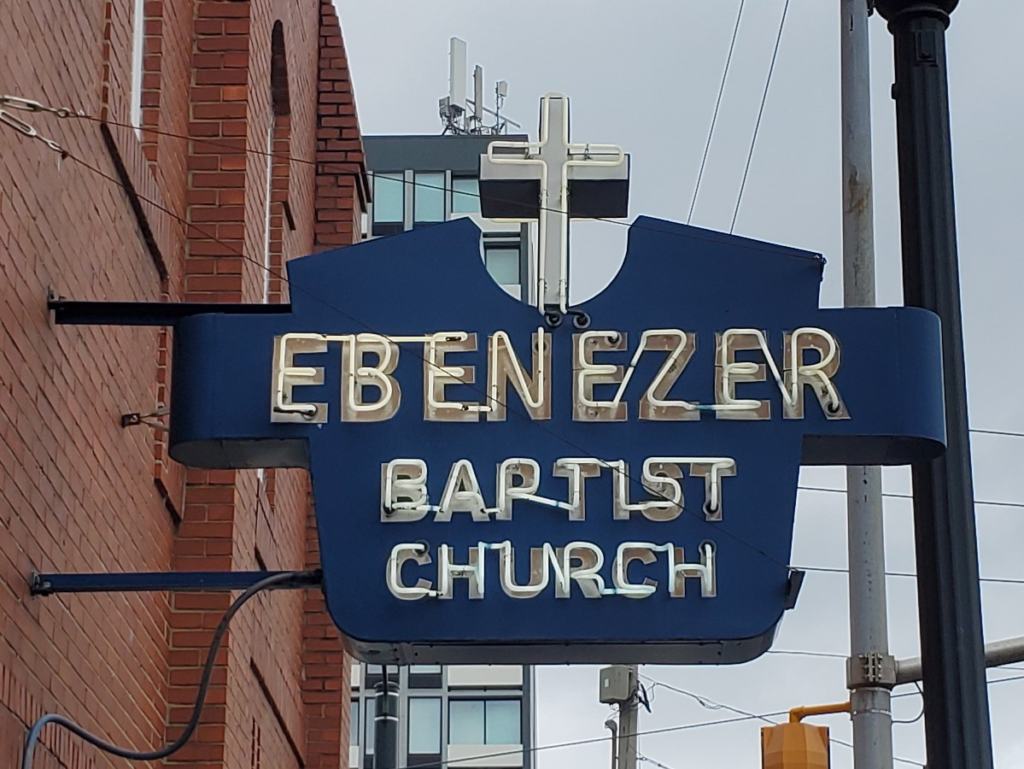
Ebenezer Baptist Church | Courtesy of Wikimedia Commons
The Church Became A Center For Social Activism
Under the leadership of the King family, Ebenezer Baptist Church became a center for activism and organizing in the Civil Rights Movement. Both Martin Luther King Jr. and his father were outspoken advocates for racial equality and social justice, and they used the church as a platform to promote their message.
In addition to its role in the Civil Rights Movement, Ebenezer Baptist Church has also played an important role in the spiritual and cultural life of the African American community in Atlanta. The church has hosted many notable speakers and events over the years, and its choir is known for its powerful performances of traditional gospel music.
Today, Ebenezer Baptist Church is a national historic landmark and a popular tourist attraction. It continues to be an active church, hosting regular worship services and community events, and remains an important symbol of the African American community’s struggle for freedom and equality.

Martin Luther King, Sr., Rosalyn Carter, Andrew Young, Coretta Scott King, President Jimmy Carter at Ebenezer Baptist Church | Courtesy of the Jimmy Carter Presidential Library
4. Atlanta Botanical Garden
Our next Atlanta landmark features renowned plant collections, beautiful displays and spectacular exhibitions. At #4 on our list of the Best Atlanta Landmarks is the Atlanta Botanical Garden.
The Atlanta Botanical Garden was established in 1976 as the DeKalb County Botanical Garden, and was originally located in the Druid Hills neighborhood of Atlanta. In 1985, the garden was moved to its current location in Midtown Atlanta, where it now covers 30 acres.
The garden was created as a collaboration between the Atlanta Botanical Garden Inc. and the City of Atlanta, and was designed to serve as a center for education, conservation, and research.
Over the years, the garden has expanded to include a wide range of gardens and collections, including: a Children’s Garden, a Tropical Rotunda, a Japanese Garden, and the Canopy Walk, which is a walkway suspended 40 feet above the ground that allows visitors to walk among the treetops.

Atlanta Botanical Garden | Courtesy of Wikimedia Commons
The Garden Has Opened Some Amazing Exhibits
The garden opened the Fuqua Orchid Center in 1999. It’s a state-of-the-art orchid display and research facility. In 2004, the garden opened the Gardenhouse, a LEED-certified building that serves as an event space and a showcase for sustainable design.
In 2010, the garden opened the Edible Garden, a 2.5-acre garden that demonstrates sustainable gardening techniques and showcases a variety of fruits, vegetables, and herbs.
The Atlanta Botanical Garden has become one of Atlanta’s most popular attractions, drawing more than 500,000 visitors each year. In addition to its gardens and collections, the garden hosts a variety of special events throughout the year, including concerts, festivals, and seasonal celebrations.
The garden also offers a range of educational programs and classes for adults and children, as well as research and conservation initiatives aimed at preserving endangered plant species.
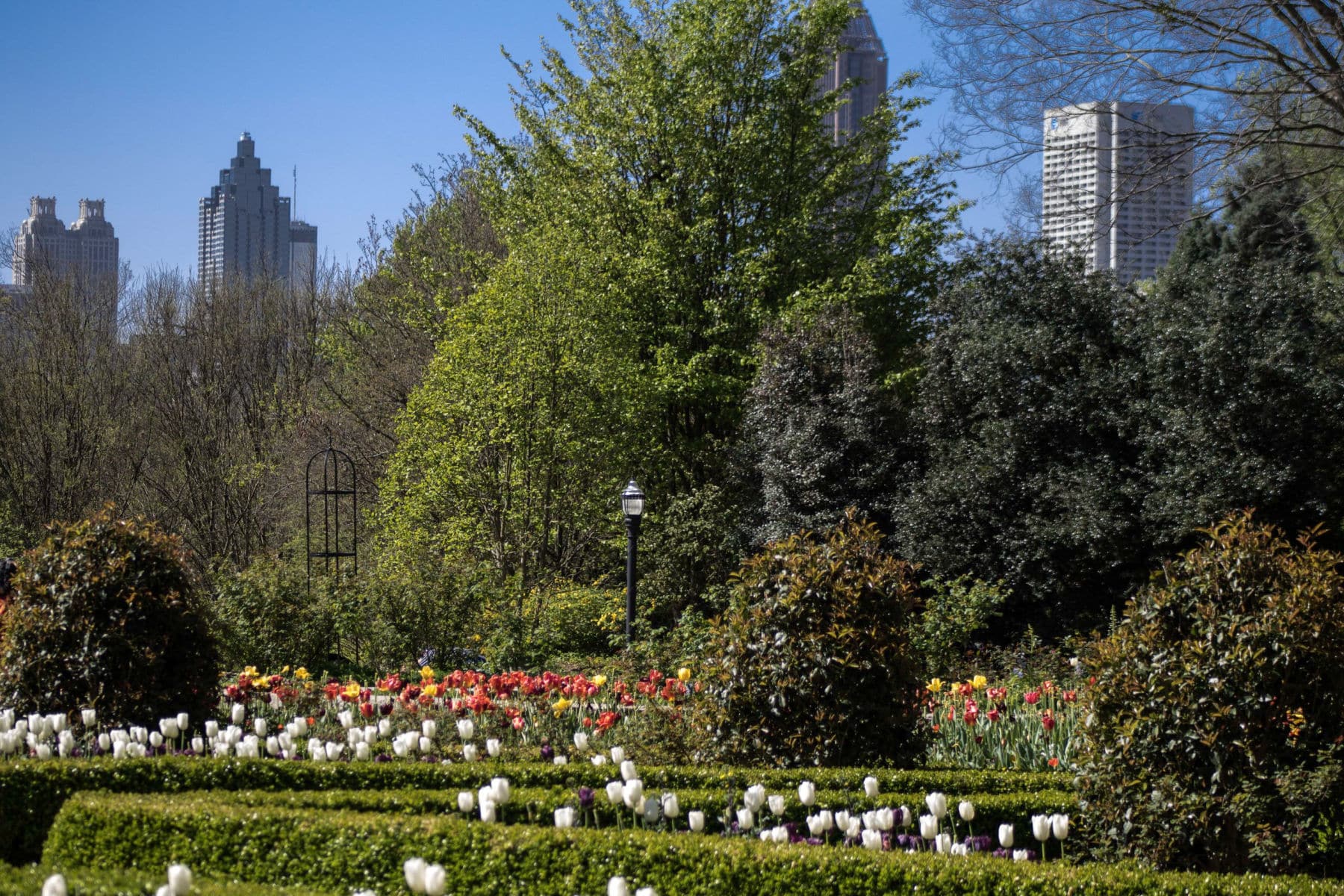
3. World Of Coca Cola
Our next Atlanta landmark is the only place where you can explore the fascinating story of Coca-Cola – the world’s best-known beverage brand.
Visitors can spend the day interacting with multiple exhibits, learning about the storied history of the iconic beverage brand, and sampling more than 100 different beverages from around the world.
At #3 on our list of the Best Atlanta Landmarks is the World Of Coca Cola.
The World of Coca-Cola celebrates the history and culture of the Coca-Cola Company and its famous soft drink.
The museum features a range of exhibits and experiences that explore the history of Coca-Cola, including its origins as a medicinal tonic in the late 19th century, its rise to global fame as a soft drink in the 20th century, and its ongoing cultural significance around the world.
One of the main attractions at the World of Coca-Cola is the Vault of the Secret Formula, which features a multimedia exhibit that tells the story of the iconic beverage’s secret recipe and its journey through history.

World Of Coca Cola | Courtesy of Wikimedia Commons
Sample Over 100 Different Coca Cola Products From Around The World
Visitors can also sample over 100 different Coca-Cola products from around the world, including rare and limited-edition flavors.
Other exhibits at the museum include a 4D movie experience that explores the global impact of Coca-Cola, a pop culture gallery featuring Coca-Cola advertising and memorabilia, and a replica of the bottling line used to produce Coca-Cola in the early 20th century.
The World of Coca-Cola also offers a range of interactive experiences, including a chance to take a photo with the Coca-Cola polar bear mascot, create a custom Coca-Cola bottle, and try on virtual reality goggles to explore different parts of the Coca-Cola production process.

World Of Coca Cola | Courtesy of Wikimedia Commons
2. Martin Luther King, Jr. National Historical Park
We’re on to our final 2 Atlanta landmarks. In the runner-up spot at #2 is a place that consists of dozens of historic buildings — most of them built between 1890 and 1920 — spread over 38 acres near downtown Atlanta.
Welcome to the Martin Luther King, Jr. National Historical Park.
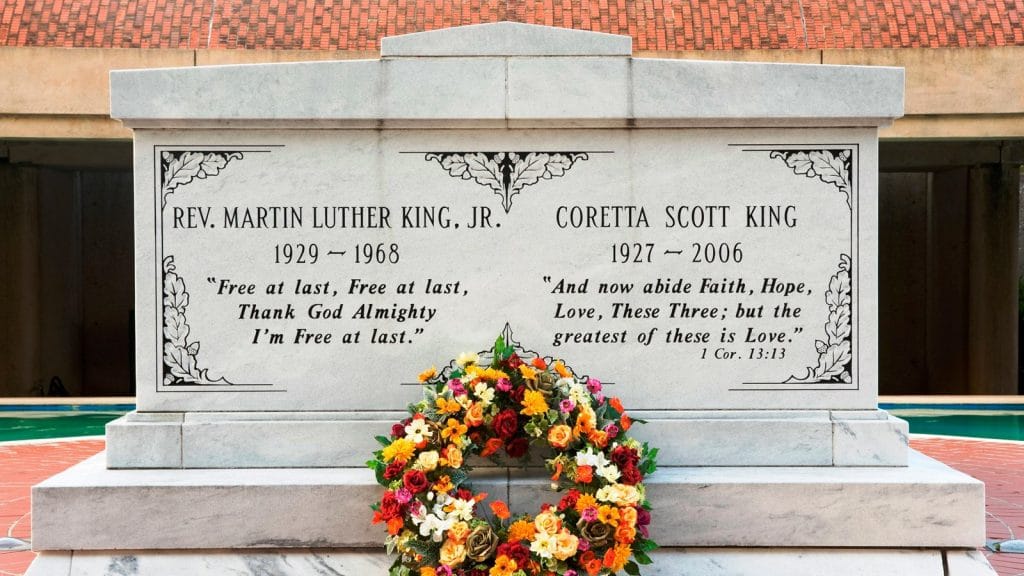
Martin Luther King, Jr.
Martin Luther King Jr. (1929-1968) was an American Baptist minister, activist, and leader in the American Civil Rights Movement. He is best known for his role in advancing civil rights using nonviolent civil disobedience based on his Christian beliefs.
King was born in Atlanta, Georgia and educated at Morehouse College, Crozer Theological Seminary, and Boston University, where he earned a Ph.D. in systematic theology. He became a Baptist minister and began working for civil rights in the 1950s.
King played a key role in the Montgomery Bus Boycott in 1955-1956, which led to the desegregation of the city’s bus system.

Martin Luther King, Jr. being arrested during the Montgomery Bus Boycott | Courtesy of Wikimedia Commons
He Went On To Lead A Number Of Important Campaigns
He went on to lead a number of other campaigns, including the Birmingham campaign and the March on Washington for Jobs and Freedom, where he delivered his famous “I Have a Dream” speech in 1963.
King’s leadership and activism helped to secure the passage of several important pieces of civil rights legislation, including the Civil Rights Act of 1964 and the Voting Rights Act of 1965.
King’s commitment to nonviolent protest and his message of equality and justice for all have made him an enduring symbol of the American Civil Rights Movement. In recognition of this fact, he was awarded the Nobel Peace Prize in 1964 for his work towards social justice and civil rights.
Tragically, King was assassinated in Memphis, Tennessee on April 4, 1968.
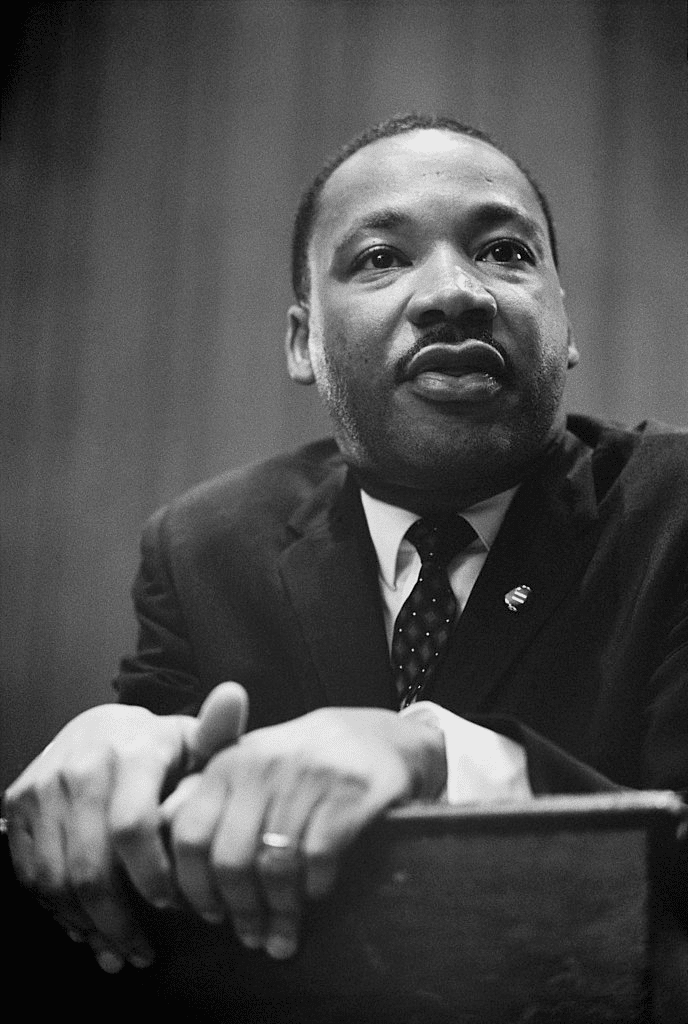
“I have decided to stick with love. Hate is too great a burden to bear.”
dr. Martin luther king, jr.
Things To See
The Martin Luther King Jr. National Historical Park is a national park that preserves and commemorates the life and legacy of civil rights leader Martin Luther King Jr.
The park includes several buildings and sites that are significant to Dr. King’s life and work, including his boyhood home, the original Ebenezer Baptist Church, where he and his father both served as pastors, and The Martin Luther King Jr. Center for Nonviolent Social Change, also known as “The King Center”.
The National Park Service has restored many of the neighboring buildings to reflect their appearances in the 1930s and 1940s, the period of time when Dr. King grew up there.
This allows visitors to step into that era and imagine themselves walking with the residents, hearing the noise of this lively neighborhood and experiencing what life was like in those tumultuous times.
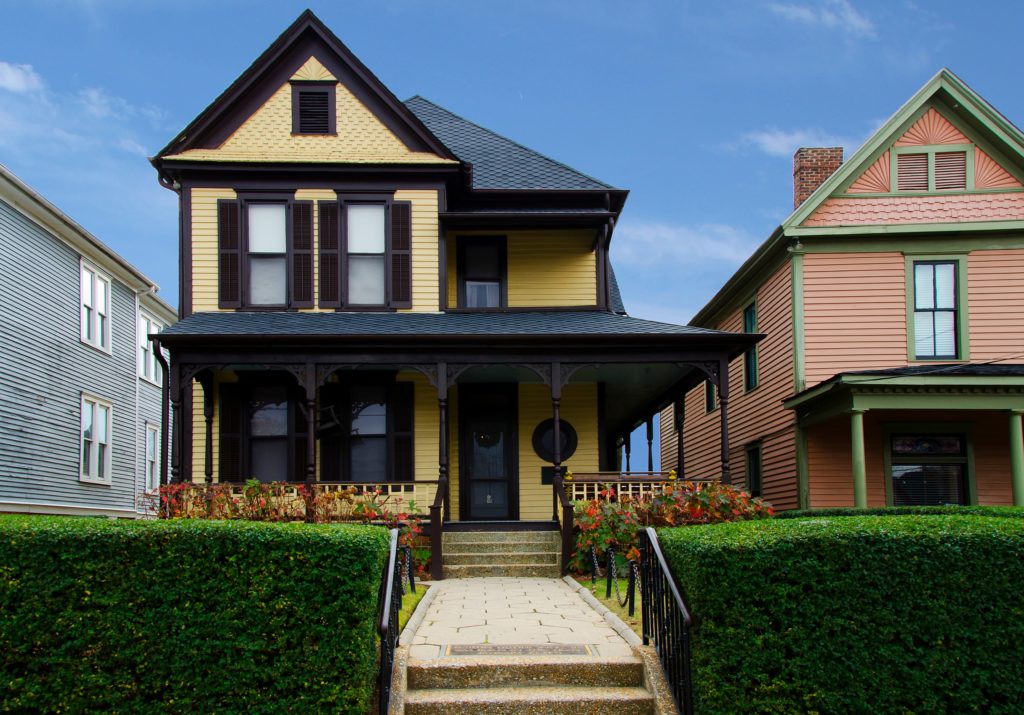
Civil Rights Walk Of Fame
The park also includes the International Civil Rights Walk of Fame, where visitors can see the footprints and signatures of civil rights leaders from around the world, and the Martin Luther King Jr. Memorial Garden, a peaceful place for reflection and contemplation.
The park offers a variety of educational programs and events throughout the year, including guided tours, lectures, and workshops, which help visitors to understand the significance of Dr. King’s life and work and the ongoing struggle for civil rights and social justice.
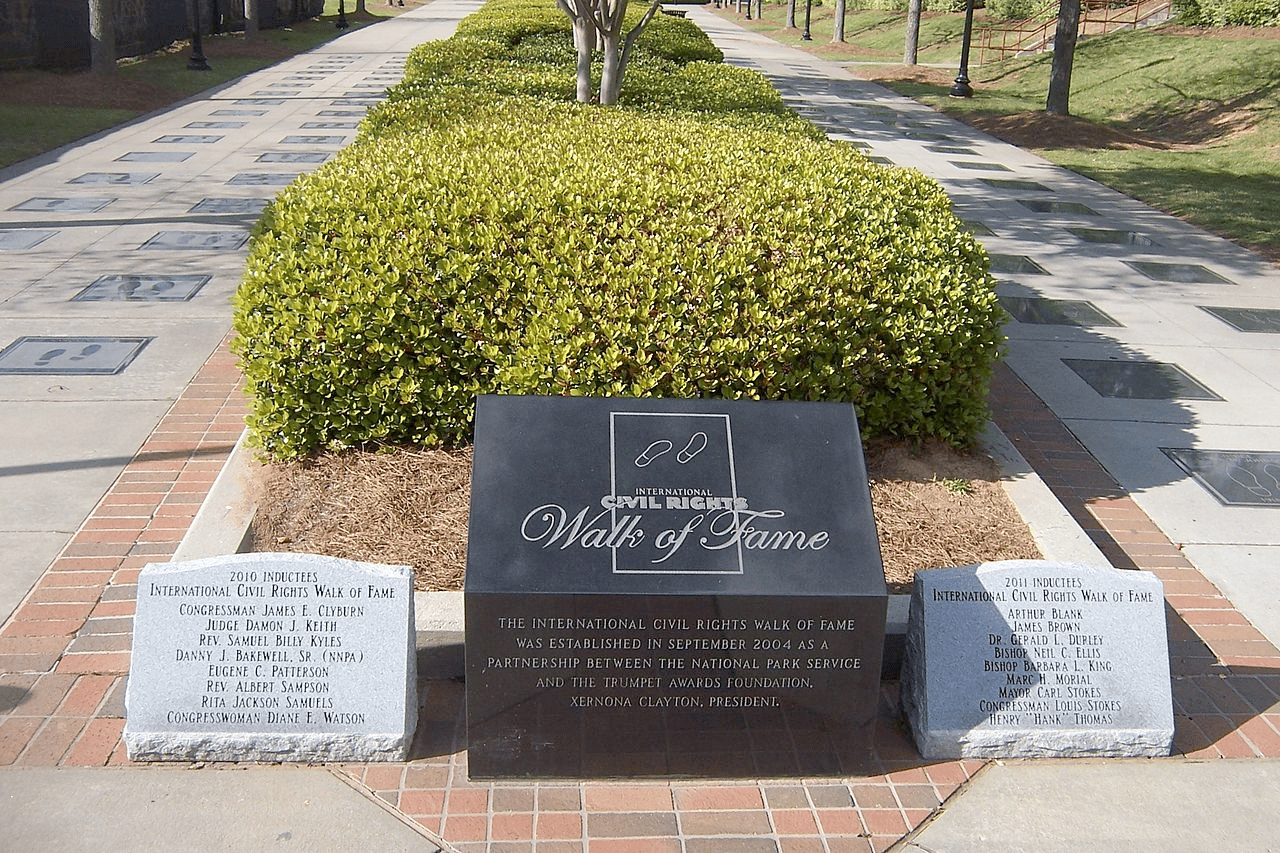
1. Jimmy Carter Presidential Library & Museum
We’ve saved the best for last. More Than Just Parks #1 Georgia Landmark celebrates the only Georgian to be elected President of the United States. It’s the Jimmy Carter Presidential Library & Museum.
The Jimmy Carter Presidential Library & Museum celebrates the man who has been universally acclaimed as the most successful former president in history.
Carter, however, was not only a successful ex-president. History is finally catching up with the man who today is recognized as having been decades ahead of his time.

Jimmy Carter Library and Museum | Courtesy of Wikimedia Commons
Decades Ahead Of His Time
Though from a segregated and racist background in Georgia, Carter pushed for affirmative action and prioritized diversity among judicial nominees, including the appointment of Ruth Bader Ginsburg and Amalya Lyle Kearse.
He startled the globe by personally brokering the critical Middle East peace treaty between Anwar Sadat and Menachem Begin at Camp David.
He ceded access to the Panama Canal, angering conservatives who thought he was giving away an American asset.
Through the Alaska National Interest Lands Conservation Act, he doubled the national park system and conserved over 100m acres of land – the most sweeping expansion of conserved land in American history.

Carter was right on asking us to drive less, to reduce our dependence on foreign oil, to focus on conservation and renewable energy. Not only was Carter’s vision a path not taken, it was a path mocked. Reagan removed the solar panels from the White House, politicized the environmental movement and painted it as a fringe endeavor.
-Megan Mayhew bergman, the guardian, decades ahead of his time: history catches up with visionary jimmy carter
Jimmy Carter’s Presidency Was Not What You Think
Regrettably, the political narrative surrounding President Carter in the aftermath of his 1980 defeat to Ronald Reagan has largely been shaped by his political adversaries. The reality, however, is quite different.
Kai Bird is a Pulitzer Prize-winning historian and journalist. He is the author of The Outlier: The Unfinished Presidency of Jimmy Carter.
Bird notes in a New York Times editorial that Carter was probably the most intelligent, hard-working and decent man to have occupied the Oval Office in the 20th century.
As Bird writes, “His [Carter’s] presidency is remembered, simplistically, as a failure, yet it was more consequential than most recall. He delivered the Camp David peace accords between Egypt and Israel, the SALT II arms control agreement, normalization of diplomatic and trade relations with China and immigration reform.”
“He made the principle of human rights a cornerstone of U.S. foreign policy, planting the seeds for the unraveling of the Cold War in Eastern Europe and Russia.”

The President Who Tried To Save The Planet
In an article which appeared in the Washington Post in February of 2023, the newspaper referred to the former president as: “Jimmy Carter, The President Who Tried To Save The Planet.”
The Post went on to note that: “Despite serving a single term, Jimmy Carter ranks as one of the most consequential U.S. presidents when it comes to environmentalism, according to historians, conservationists and several former federal officials.”
To Learn More About Carter’s Groundbreaking Work As A Conservationist & Environmentalist, check out the following articles by More Than Just Parks:
(1) Jimmy Carter Was The Greatest Conservation President
(2) 14 Reasons Why Jimmy Carter Is America’s Greenest President

The Jimmy Carter Presidential Library & Museum
The Jimmy Carter Presidential Library and Museum is a complex of buildings located in Atlanta, Georgia, that houses the papers, records, and artifacts of former U.S. President Jimmy Carter. The library and museum are a popular tourist attraction, and are open to the public for research and education.
The idea for the library and museum was first proposed in the late 1970s, shortly after Jimmy Carter left office as the 39th President of the United States. In 1980, a site in Atlanta was selected for the complex, and construction began the following year.
The library and museum were officially dedicated in 1986, and have since become an important resource for scholars, researchers, and students studying the Carter presidency and the history of the United States in the late 20th century.
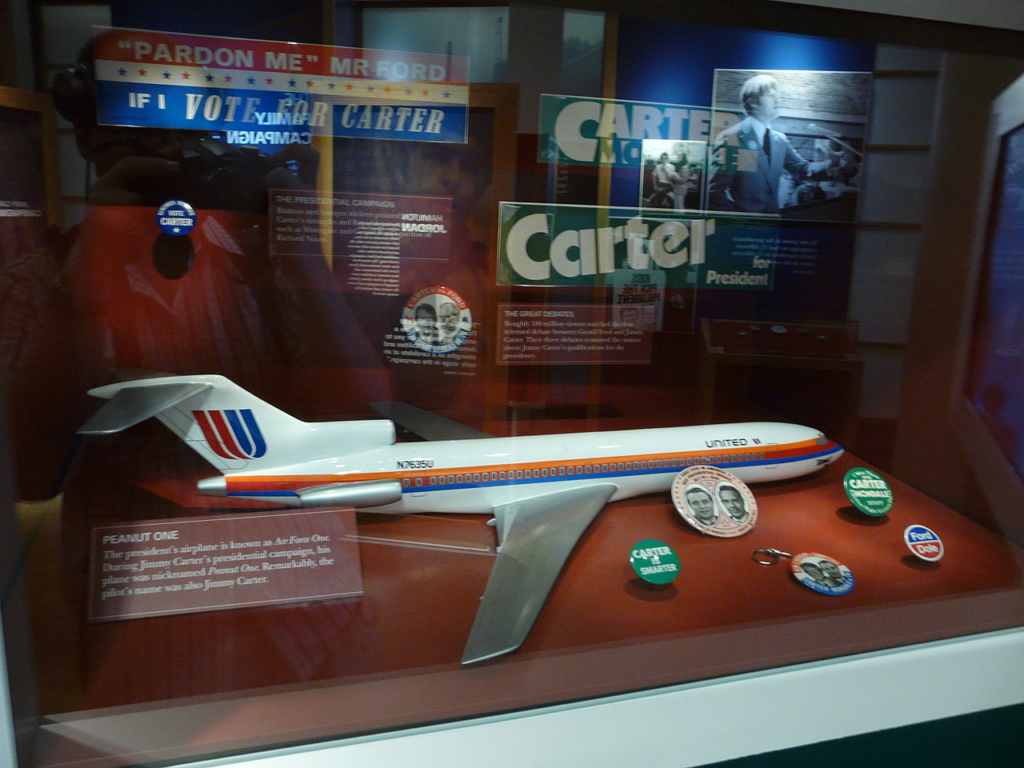
Jimmy Carter Presidential Library & Museum | Courtesy of Wikimedia Commons
Explore The Life & Career Of Jimmy Carter
The museum features a range of exhibits that explore the life and career of Jimmy Carter, as well as the history of his presidency and the key issues and events of the era. The exhibits include artifacts such as Carter’s Nobel Peace Prize medal and a replica of the Oval Office during his presidency.
The library also houses a vast collection of documents and records related to the Carter presidency, including speeches, correspondence, photographs, and other materials. These materials are available for researchers and scholars to study and analyze, and have helped to shape our understanding of the Carter presidency and the political and social climate of the era.
Today, the Jimmy Carter Presidential Library and Museum is a popular destination for tourists and students of history alike, and remains an important resource for anyone interested in the life and legacy of Jimmy Carter and the history of the United States in the late 20th century.
“I have one life and one chance to make it count for something… My faith demands that I do whatever I can, wherever I am, whenever I can, for as long as I can with whatever I have to try to make a difference.”
-Jimmy Carter
The Pattiz Brothers With The 39th President Of The United States
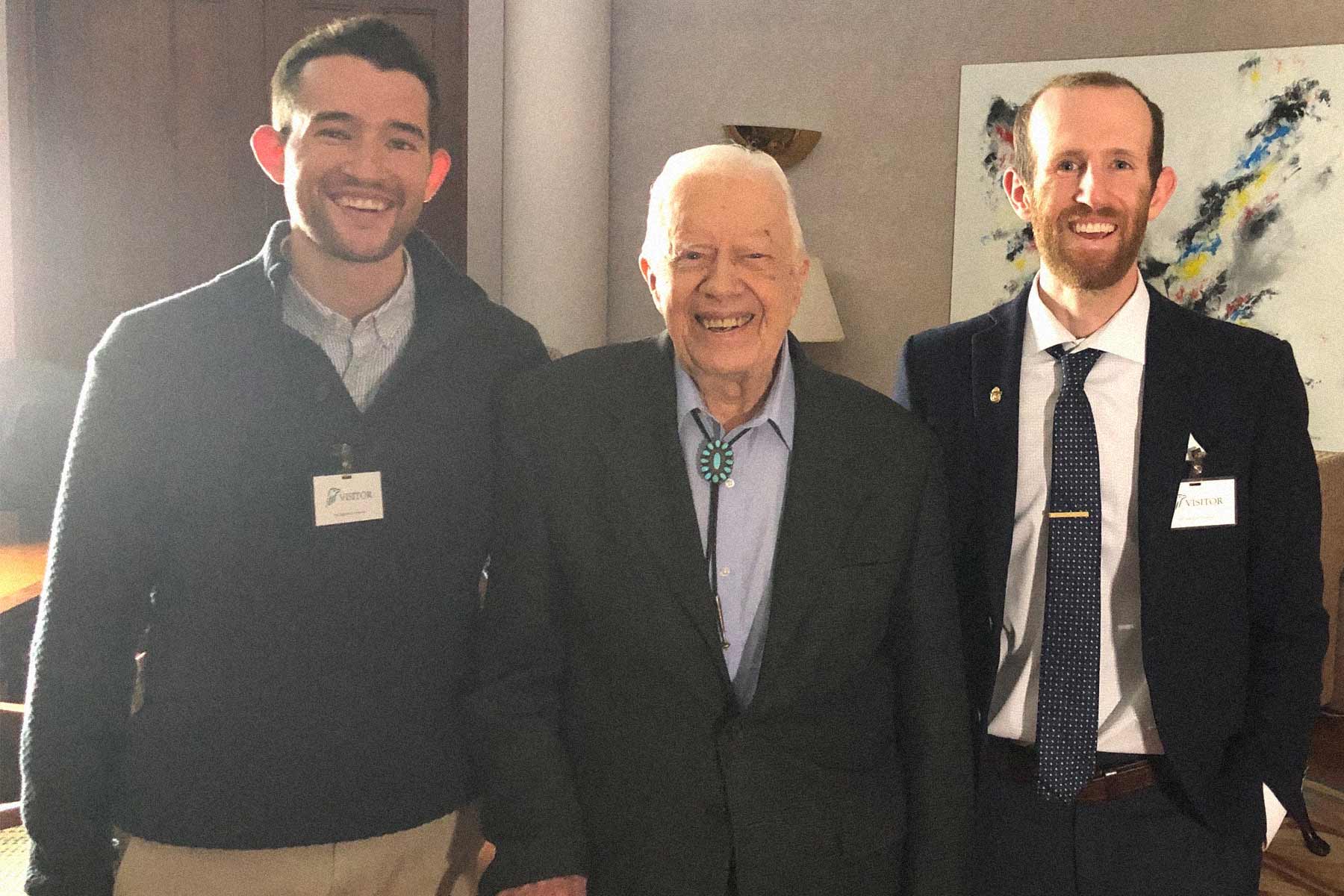
Things To Do
The Jimmy Carter Presidential Library and Museum offers visitors a range of things to see and do, including:
- Explore the museum exhibits: The museum features a range of exhibits that explore the life and career of Jimmy Carter, as well as the history of his presidency and the key issues and events of the era. The exhibits include artifacts such as Carter’s Nobel Peace Prize medal and a replica of the Oval Office during his presidency.
- Attend a special event: The library and museum regularly hosts special events, such as book signings, lectures, and film screenings. Check the museum’s calendar of events for upcoming programs.
- Visit the gardens: The library and museum are set on a beautiful 35-acre park, which includes gardens, walking paths, and outdoor sculptures.
- Research in the archives: The library houses a vast collection of documents and records related to the Carter presidency, including speeches, correspondence, photographs, and other materials. These materials are available for researchers and scholars to study and analyze.
- Take a guided tour: The museum offers free guided tours led by docents who are knowledgeable about Jimmy Carter’s life and presidency.
- Shop for souvenirs: The museum’s gift shop offers a range of souvenirs, including books, DVDs, and other items related to Jimmy Carter and the presidency.
Learn About Our President Carter Film
Map Of Atlanta Landmarks
List Of Atlanta Landmarks
- Jimmy Carter Presidential Library & Museum
- Martin Luther King, Jr. National Historical Park
- World Of Coca Cola
- Atlanta Botanical Garden
- Ebenezer Baptist Church
- National Center for Civil and Human Rights
- Georgia Aquarium
- Little Five Points
- Centennial Olympic Park
- High Museum Of Art
- The Varsity
- Margaret Mitchell Square
- Georgia Capitol Museum
- Atlanta Cyclorama & Civil War Museum
- Center For Puppetry Arts
- CNN Center
- Atlanta History Center
- Swan House
- Fernbank Museum of Natural History
- The Fox Theater
Why Trust Us About Atlanta Landmarks?
We’re Jim Pattiz and Will Pattiz, collectively known as the Pattiz Brothers and we absolutely LOVE the national parks.
You should probably know that we don’t just make this stuff up out of thin air. We’ve spent our entire adult lives exploring and filming America’s national parks and public lands.
We’ve worked with the National Park Service, the Department of Interior, USDA, U.S. Forest Service, and more for years creating films on important places and issues. Our work has been featured in leading publications all over the world and even some people outside of our immediate family call us experts on the national parks.
And, in 2018, our father – having spent a lifetime teaching history – joined us so that he could help us to tell the stories behind these amazing places.
Meet The Parks Brothers
We Hope You’ll Follow Our Journey

Our goal here at More Than Just Parks is to share the beauty of America’s national parks and public lands through stunning short films in an effort to get Americans and the world to see the true value in land conservation.
We hope you’ll follow our journey through the parks and help us to keep them the incredible places that they are. If you’re interested in joining the adventure then sign up below!
Related Links
What Is A National Park? To learn more about the difference between the various National Park Service designations check out our article that explains everything!
Civil War Sites: Top 10 Best Civil War Sites & Battlefields
Georgia National Parks: 12 AMAZING Georgia National Parks
Jimmy Carter: Jimmy Carter, Not Theodore Roosevelt, Was The Greatest Conservation President

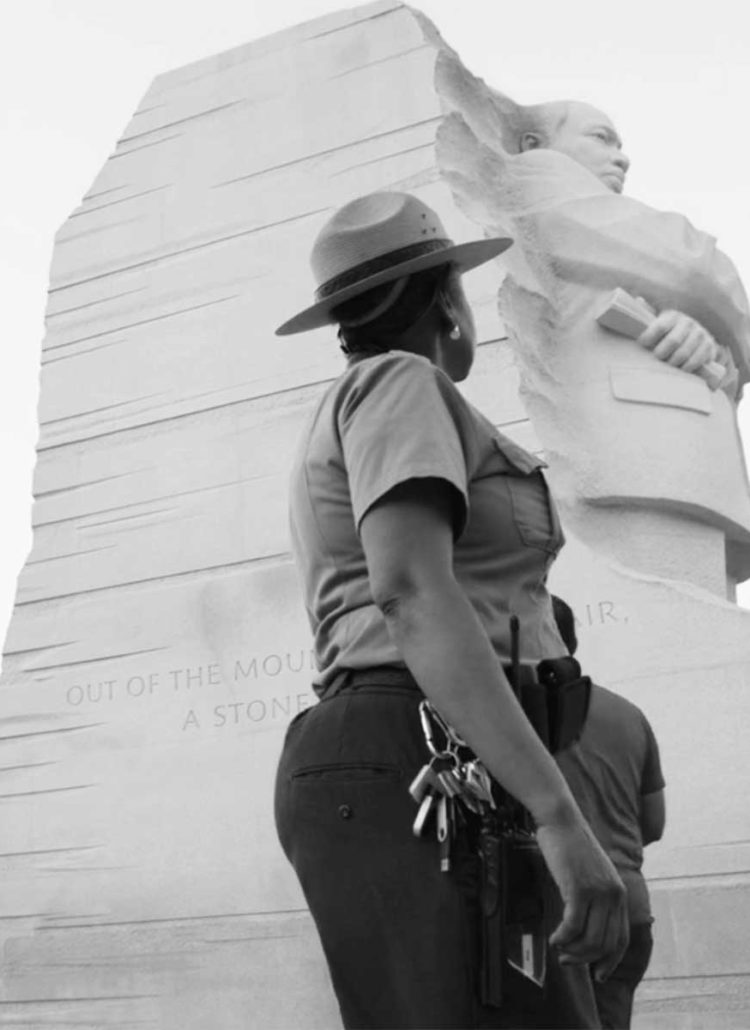

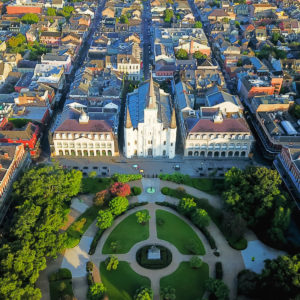

Leave a Reply